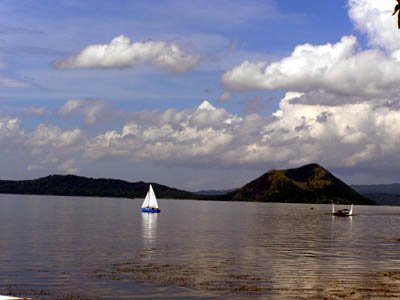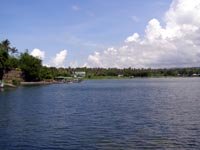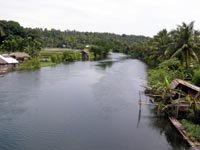|
Taal Volcano and the Freshwater Taal Lake
Taal Volcano is recognized as the smallest active volcano in the world. The volcano can be found in the interior part of Taal Lake, and 70 kilometers south of Metro Manila. It is distinctive because of the fact that the volcano itself forms a landmass that has a lake inside its crater, and known as the “Crater Lake”. The Crater Lake’s water has a diluted form of sulfuric acid with extreme absorption of aluminum, boron, magnesium and sodium in salt structure. The volcano can be best viewed in Tagaytay City because of its high altitude. The lakeshore towns of San Nicholas, Agoncillo and Talisay are places in Batangas you can have a closer view, and actually take you to the top of the crater.
Between 1572 to the present-day thirty-three eruptions has been recorded, mostly in Volcano Island. The great 1754 plinian eruption lasted for days that dimmed the skies and affecting the entire region including Metro Manila area with fallout. According to some experts, the eruption of 1754 closed the open channel of the sea and permitted the buildup of freshwater from rainfall leading to the development of Taal Lake. Taal Lake is the third largest lake in the Philippines. A waterway called Pansipit River connects the lake thru Balayan Bay and is considered to be very rich in natural resources and different kinds of marine species that thrives in the river.
The lake is very important for fisheries especially maliputo and tawilis which are saltwater fishlike in attributes. As determined by Peter J.P. Whitehead of the British Museum of Natural History, tawilis “is the only species of Sardinella that is found in fresh water.” It’s also the home to the only known species of sea snakes (Hydrophis sempen), which have cultured to adjust to freshwater. There are many other varieties, which until now have yet to be recognized, and whose natural histories have not been totally deliberated.
The 1965 eruption of Taal Volcano began with the discharge of basalt shower. An explosion caused by groundwater coming into contact with ascending magma followed this, and opened a new crater on the southwest side of Volcano Island. The eruption made a new crater about 1.5 kilometer long and 300 meters wide. A cinder cone and lake formed in the new vent. In February 1992 the volcano has been restless with multitude of earthquakes, ground cracks, steaming area and increase in water temperature of the lake. Volcanologist and local authorities are carefully monitoring Taal and the volcano remains calm. Taal Volcano physical structure cannot be likened with other volcanoes. The volcano was made through one main eruption at the center of the lake, and the lake itself is the crater of a very old volcano.
Return from Taal Volcano to Things To DO
|








